Peter Pan: The Seven Standards of Disney
Since the premiere of Snow White, Disney has never failed to deliver movies of a certain caliber. Though they are aimed primarily at children, those movies have managed to withstand the test of time. Those who watched those movies as kids have grown up and passed the experience on to their own kids and even grandkids. Disney has created a circle that may well last for a long time to come. Until now, Disney releases those movies, each one different but with a similarity, a spark that lets their watchers know they are watching a Disney film. Indeed, Disney has succeeded time and time again, all but dominating the entertainment industry with movies from the early 1930’s until the 2010s.
Peter Pan is one film that follows a specific formula, making it a classic Disney movie. To a Disney veteran, one may well be able to spot these standards without much difficulty. Thus far, the standard test has been administered to the recent Disney films such as Tangled and Frozen and even went up against the reigning Lion King. How were Disney movies before the Disney Renaissance of the 1990’s? Putting Princess films up to the standard test is one thing but putting films up from Disney’s Rock-bottom age like The Black Cauldron or its early years like Peter Pan, one may get a glimpse of how entertainment was back then.
The seven standards stand as follows: The Origin/story which focuses on its origins and source material, the Disney Princess, the Romantic Relationship, the Disney villain, the Disney musical score, the side-characters, and the Disney setting. Peter Pan does not have your typical Disney Princess, however, just a normal girl dreaming of the adventures of Peter Pan himself. Not only that, but the Disney relationship is lacking too. This is when the controversy pops up. Are all Disney films without a princess doomed against those aspects that make a Disney film Disney? No. If so, most Disney films fall short anyway, which defeats the whole purpose of this series of articles. How does one judge the romantic relationship when there is no romance to be had? By looking at the protagonist instead of the Princess and by looking at the broader aspect of relationships, the true mettle of Disney films comes to the spotlight.
Origin/Storyline
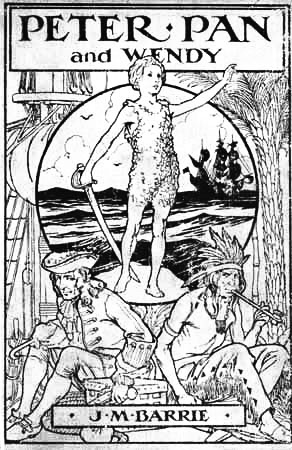
The Origin standard is generally not difficult to meet. It only means that a Disney movie has an origin in something else. In Disney’s case, adaptation is what they do best, and very few of their works are wholly original. In Peter Pan’s case, the movie is adapted from a play by the same name. In the novel, Peter makes a night-time call on the Darling residence where he listens to stories by the mother Mary Darling. After losing his shadow, Wendy reattaches it for him. In return, Peter offers her a place in Neverland, a place where they would never grow up. Wendy’s brothers John and Michael tag along and are given a home with the Lost Boys, Peter’s group of small children.
After a raid by pirates, Wendy recuperates in a house while Peter visits Mermaid Lagoon and rescues the Native American Tiger Lily from the pirates. Unfortunately, Peter is mortally wounded in the attack. He shows little fear of death, but the Indians are indebted to him and guard his home from another attack. Able to use a bird’s nest as a boat, he sails back home. Wendy, meanwhile, recalls her own family and chooses to take her brothers back home to England. Before she can do so, they are all captured, and Hook sends Peter poison hoping for him to drink it. Tinkerbell is unable to warn him in time and so drinks the poison herself, causing near death. In the play, the audience is required to clap to show their belief in fairies and save her. Moving on to defeat the pirates and rescue his friends, Peter saves the day and Hook is eaten and killed by the crocodile.
The story ends with Wendy taking them all back home. It is at the end when Peter Pan meets Mary Darling and, it is greatly hinted that the two knew each other when she herself was young. Mary adopts the Lost Boys and tries adopting Peter, but Peter refuses and returns to Neverland.
The movie is much the same as the play and the novel. There are some notable differences like the absence of the threat to Tinker Bell’s life (audiences can’t direct the course of events in a movie after all) and Peter being mortally wounded. In the film itself, Captain Hook is not killed and it simply ends with him being chased by the crocodile. In the film, Peter is resistant to Wendy returning home, getting very bitter. It is not until after his swordfight with Hook when he relents. Nonetheless, the Lost Boys return to Neverland. Also, it is suggested that it is the father, George Darling, who possibly knew Peter, not the mother. Still, the story remains the same at its core. In fact, this film could be considered one of Disney’s most faithful adaptations due to its similarity to the original work (as Disney usually takes liberties.)
Disney Princess

From Snow White to Anna and Elsa, each and every Disney Princess is remembered for one thing or another. Peter Pan is different though. Usually, when Disney makes a female protagonist, it is usually a princess. Wendy is different. She is not a princess but an average human girl, a girl afraid of growing up, which makes her relatable to children with the same fears. This main character is overshadowed by Peter Pan himself. It is no surprise to say that this girl is not usually remembered as a Disney Princess, let alone a Disney heroine means Disney failed with this standard. Why? Making Wendy relatable should have been enough but it clearly was not. Naming Disney characters, Wendy is seldom thought of and it is not hard to see why.
For one thing, even though Wendy is the main character, the movie is about Peter himself. Peter is the star of the movie and he is the protagonist. Peter is the one refusing to grow up, he’s the one who rescues Tiger Lily, he’s the one who defeats Hook, and he is the one who takes them home. Where the play focuses on Peter, the movie focuses on Wendy. We see things from her viewpoint. Where Disney’s main characters are usually the leading party in the action sequences, Wendy is merely a trigger if not the one being fought over to begin with. Peter being the protagonist in a movie named after him makes sense, but when contrasted with Wendy who is shown more and clearly plays the role of the main character creates a sort of chaos.
It is sad that Wendy did not manage more than she deserved. She very well could’ve become a heroine in her own right, not necessarily a Princess but a memorable Disney character. The movie focuses more on the spirit of youth rather than the main character. While there is nothing inherently wrong with that, and while the movie itself is remembered fondly, the character of Wendy is not. Had the movie taken the route of Hunchback of Notre Dame, and focused more on Peter’s point of view, this may not have been too much of an issue as Peter would then have been compared to Disney’s protagonists (like Simba and Qausimodo) in his own right. Because Wendy acts as a side-character despite being a main character, she is not done as much justice in comparison to Esmerelda, who was neither a Princess nor a protagonist, but a triggering character to motivate the real main character.
Disney Romance/Relationship
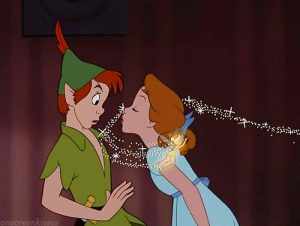
Usually, this standard would explore romantic relationships. Since Peter Pan does not have any, it moves to the next best thing: Relationships in general, particularly the most prominent relationship in the series. Indeed, a Disney movie without a romantic relationship can still pass the test of time, and still claim a higher position than other Disney movies that have met all seven standards. Lilo and Stitch focused on the relationship between Lilo and Nani, there was no romance. Frozen could have cut the romance out completely and the plot would not have suffered. Pinocchio had no romance, let alone girls- with the exception of the Blue Fairy- whatsoever and that movie almost definitely withstood the test of time.
The relationship in this movie is that between Wendy and Peter. One may very well make a case that this relationship is implicitly romantic, but Peter is meant to serve another role. Wendy is growing up, that’s the central plot of the movie. Her father is about to move her out of the nursery and she leaves to Neverland to escape adulthood, her brothers tagging along. Upon meeting Peter and his gang of Lost Boys, she begins to make peace with the idea of growing up, she moves that peace on to her brothers in an emotional song, and decides to leave Neverland. Peter actually does not like this idea, demanding that she stay with him in Neverland, but after the fight with the pirates, he too makes peace with this.
Instead of romance, this is reconciliation between childhood and adulthood. Peter is Wendy’s childhood and so Peter does not initially agree with the idea of growing up. Being the spirit of youth and of Neverland in general, leading a gang of little boys, he is completely against the idea. This is why Disney did not go for the romance between them. As implicit as one may argue it was, (especially considering Tinker Bell’s jealousy) Wendy and Peter Pan getting together would’ve been quite the scary message considering what Peter symbolizes and what Wendy ends up doing to begin with. Peter is the immortal youth and Wendy is the normal human being who leads her brothers to the ultimate journey of growing up.
Disney Villain
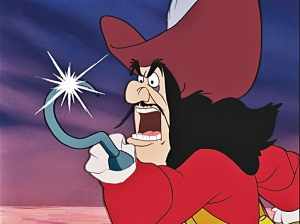
Most villains in Disney tend to be very different than its predecessors and even its successors. They all have a certain uniqueness to them and they all fit their settings well. Jafar is the power-hungry sorcerer based in Arabian Agrabah, Ursala is the sea witch based nowhere else than under the sea, and Maleficent is the Mistress of all Evil and is based in medieval England. Captain Hook is no different. He is the pirate and he leads a band of thieves and pirates. However, Captain Hook is also quite the unstable pirate. Some of his antics may be taken as comedy but they suggest some deep resentment, possibly instability, especially when Peter Pan is involved. Pan fondly remembers the time he cut Hook’s hand off, which suggests a real childish ignorance as to what is right and wrong.
This suggests that there is more to Hook than just being a pirate. Like Governor Ratcliffe in Pocahontas, he is after riches. As explained, Peter represents Wendy’s childhood. Hook hates Peter Pan. If taken as the basis and coupled with the fact that he wants revenge against him, it suggests psychological issues. Peter cut Hook’s hand and gave it to the crocodile, thus earning Hook’s undying anger and thirst for vengeance. If it is recalled that Hook is also possibly unstable, one can assume that he may’ve suffered a tragic childhood himself. Pushing even further, Hook even spoke of losing his hand to his first mate, Smee. Smee passed it off as childish games to which Hook agreed but frowned on giving his hand to a crocodile. This suggests that Peter might indeed have meant it as a game, and Hook seeing it as such too suggests he himself might’ve been a child at the time (hence why he is in Neverland to begin with.)
How did he grow up? He may’ve spent some time in the human world and still holds resentment towards Peter for remaining a child. Peter represents Wendy’s childhood, which Hook hates. This suggests a dislike of childhood in general. Hook represents the forceful adult who demands they grow up. He is an adult who turned to piracy to make a living, something most of the cast reject. Upon the cast defeating Hook, the ship is reclaimed (sequel does not count as it is not part of Disney Animated canon) and becomes gold to signify riches. Ironically, the true riches came from making peace with the fact that one day, Wendy, John and even little Michael will grow up. The only one who stays as a child is Peter Pan, the immortal spirit of youth.
Disney Music
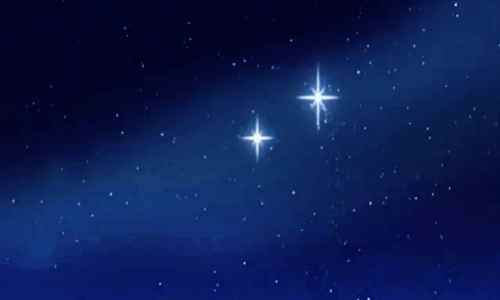
Remember all the Disney songs we know and love? ‘Circle of Life,’ ‘Under the Sea,’ and even ‘A Whole New World.’ Even the dark movie, Pinocchio had music to satisfy generations of people. Disney music changes with its time, this is why music from the renaissance are similar to each other, not to mention the fact that many of these pieces are by the same person, Alan Menken. When one thinks of his favorite songs or musical pieces, Disney is rarely mentioned but it is not underrated in any way. It is almost taken as a league of a completely different caliber. It’s different. And why should it not be? Snow White had different music in style and art to Peter Pan, which in turn had different musical styles to the renaissance. In fact, the only Disney movie to lack a song was The Black Cauldron, which failed this standard miserably.
Peter Pan did pass with this standard but not as well as other Disney movies. Sometimes, one song is all it takes but Peter Pan had two. It lacks its romantic duet so it is possibly not as highly regarded for its music as it is for its charm and style in other standards but that did not detract from its musical capabilities in any way. The pirates sang the villain’s song ‘The Pirate Song’ and Wendy had a beautiful piece called ‘Your Mother and Mine.’ Its signature pieces ‘You Can Fly’ a well as ‘The Second Star to the Right’ are very memorable. In fact, the latter song was repeated for its sequel Return to Neverland (which won’t be counted as it is not part of Disney Animated Canon) due to how memorable it was.
The only problem with this movie is the portrayal of the Indians, which represent Native Americans and if anything, almost degrade their heritage. This actually contradicts the book where Peter Pan recued Tiger Lily gladly where the movie portrays them as complete savages. In the movie, Tiger Lily was a side thing and their original intention was to fight the Indians with John in the lead. The song ‘What Makes the Red Man Red’ only further radicalizes this perception and to do so in a song does take from the standard Peter Pan attempted to meet. It is a pass.
Disney Setting
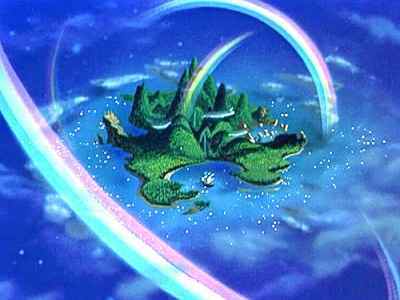
Disney always, always creates great settings that are known for the movie they take place in. Aladdin is known for Agrabah, The Little Mermaid is known for Atlantica and Sleeping Beauty is known for King Stefan’s Kingdom, the Glade and the Forbidden Mountains. Peter Pan is no different, having its setting take place in Neverland and London. London is the setting for maturation and family, growing up and living. Neverland is the setting for childhood, and even offers eternal childhood to go with it. It also offers fun adventures looking for treasures, swimming with mermaids, fighting pirates and rescuing damsels. Anything a kid could want. Positive things at least, not like Pleasure Island. Could it be any more perfect?
This setting fits very well with the movie. Neverland is the second star to the right, and serves as the sanctuary for those who refuse to grow up. It is unknown how Hook and his crew managed to become adults but as suggested before, his relationship with Peter Pan may well have something to do with it. The film generally has something to do with the spirit of youth, so the setting being some sanctuary for just that makes a lot of sense. There is more though: Neverland is a given map to the audience. Pan’s hideout, Mermaid lagoon, the Indian’s encampment, Skull rock, and more all make up the sanctuary (or not so much so) of Neverland.
Disney did not fail in this standard in the slightest. It appeals to kids in the purest sense, with childhood, swordfights, mermaids, pirates, Indians, and more. Neverland is the typical treasure map to appeal to kids and it is the typical staging ground for any swordfight between Peter and Hook. The imagery and beautiful scenery to go with Neverland gives Peter Pan a major edge in this standard. In fact, it wins it outright. It is not at all every day Disney makes a setting such as Neverland, it almost makes anyone, even adults, wants to go back to their childhood and just live there. That is when the audience knows that Disney definitely passed this with flying colors.
Disney Characters
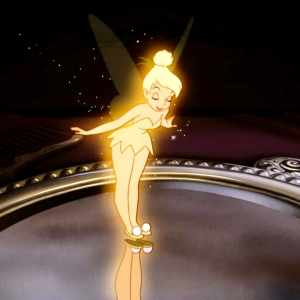
Remember Sebastian from the Little Mermaid? Remember how much we all loved him and his Jamaican accent? The Genie from Aladdin and the antics of Percy and Niko from Pocahontas are just some of the many side characters Disney has to offer. In fact, sometimes, the side characters in a Disney movie are so popular, they become more popular than the main protagonist or even the movie itself. Jiminy Cricket from Pinocchio did this very well. Add King Mufassa to the list and it is easy to see that Disney’s side characters are no joke. Characters are what Disney does best.
Peter Pan is no different. It holds one of the most widely beloved side characters Disney has to offer, so beloved that the others in the movie are overshadowed. This is by no means Disney’s fault. The fairy you see flying around Disney’s castle logo before a feature film is Tinker Bell. That same fairy got a movie series that serves as a prequel to its host movie Peter Pan. Once you add the adventurous John, the young Michael, and the Lost Boys to the cast of characters, it becomes clear Disney far from failed with this standard. In fact, it succeeded more than other movies before and after it have succeeded. It’s one thing when Disney makes a character like Grumpy but quite another when that very character becomes so popular, it becomes almost synonymous with Disney along with Jiminy Cricket and Mickey himself.
Tinker Bell has her own set of antics. She is very jealous of Wendy and at the same time, very loyal to Peter. She is the fairy that gives them all the ability to fly. She is the core of flight, symbolizing the freedom of childhood, which relates directly to the setting of Neverland. John is the adventurous brother of Wendy and acts as the leader when they become integrated with the Lost Boys, a gang of kids with whom little Michael fits right into. Michael himself is the youngest spirit and therefore the personification of youth in Wendy’s life.
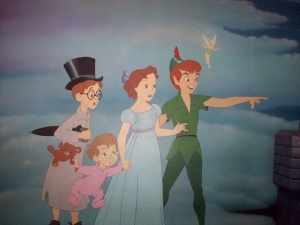
It’s clear to see that while Peter Pan offered fewer new things to its source material, having followed its adapted source faithfully (minus a few scenes here and there) it still succeeds. Like Frozen, Peter Pan failed with a standard or two, most notably the Princess standard. Still, it met all the others admirably and in a way other Disney movies before and even after it have not. This is generally what makes Peter Pan a beloved film, Tinker Bell a beloved character, Neverland a beloved setting (and so welcoming to children) and the Darling trio a beloved group of characters. Peter Pan wins. It does not win the way it usually does, but with style. It wins with visuals, endearing characters, and a crazed villain with possible layers.
Even so, the movie maintains its emotional appeal. It makes an appeal to young and old alike to retain their childhood, even as they grow older. This appeal is remembered across generations, Neverland is synonymous with childhood and pirates are the interest of children, even mermaids make an appearance. Even psychologists coin a case where the inner child completely takes over as the ‘Peter Pan Syndrome’ and it makes Disney’s case all the more remembered. Peter Pan was not just a success. It did not need a Princess or a clear protagonist, (because it was unclear) when it made up for it in many other ways. Sort of like Frozen.
What do you think? Leave a comment.
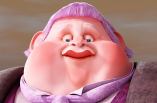

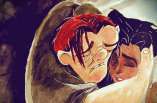








I loved ‘Peter Pan’ so much when I was little that I had a birthday cake of the memorable ‘You Can Fly’ scene, dressed up as him whilst doing a sponsored walk, pretended that sand was pixie dust to make me fly (although it never worked!) and watched the video constantly.
Haha, that’s a nice memory. I myself used to- well- fly around the halls of school. A teacher passed me and actually said, ‘No flying in school. Land.”
This is a great film to watch with your kids.
Recently going through some of the Disney films that I never viewed or had forgotten, I’m amazed at how poor the modern ones are. Tarzan, Mulan, Hercules, Princess and the Frog, these are all pretty disappointing, some almost terrible.
Then I come to a true classic like this, and I’m amazed at how good it is.
The one criticism? Hook is too pathetic a villain and too easily dispatched. One ends up feeling sorry for him. Also, some of the humour is too forced.
I actually quite liked Mulan and Tarzan. I can see why people dislike Princess and the Frog, because its style is very different but it does fit their setting.
I wouldn’t say Hook was pathetic. Like I said in the article, I believe there’s something behind him that makes him appear far less pathetic. More damaged. But yes, he was as easily dispatched as Maleficent truth be told.
A lot of the newer Disney films don’t hold up to classics like Peter Pan. I just couldn’t be entertained by Tarzan, nor The Hunchback of Notre Dame (though I love the soundtrack), and those movies were very popular during my childhood. At the same time, some of the older movies lag a bit too (The Rescuers Down Under comes to mind…). Peter Pan is one of my favorites.
If you thought “Peter Pan” was a great animated film, I suggest you check out Disney’s “Pinocchio..” from 1940; it’s even better, an absolute masterpiece..
You are absolutely correct. The second animated movie Disney ever made and it’s one of their best. In fact, Pinocchio was the very first animated movie I talked about on The Artifice because it’s one of my favorites. I grew up with that movie. Thank you, sir, for mentioning it.
Awesome article! Peter Pan has been adapted multiple times (one of is coming out next year), so it’s nice to see someone analyze the Disney version!
I love the Disney version but I’m sure a lot of Pan adaptations will continue coming out. It’s just nice to see that no adaptations really acknowledge the sequel book Peter Pan in Scarlet. I never read it but it wasn’t written by the original author.
Disney’s Peter Pan is probably my favorite and nostalgic version of Petter Pan, though Robin Williams Hook comes in at a close second. Heres hoping that the new film Pan will be as good as the Disney version.
Well, no Pan adaptation failed me yet.
It’s somewhat of a shame how the character of Captain Hook was treated in Disney’s version of Peter Pan, despite the changes made being necessary for the largest target age demographic (spoilers: Hook gets eaten by the crocodile without a fight or any humorous chase as in Disney’s film and unmistakably dies). In J. M. Barrie’s original novel and Disney’s source material, Hook was supposed to have been a much more serious character described as “handsome” and “elegant” despite being a pirate afraid of blood and of course the crocodile.
Regardless though, as a whole, Peter Pan is definitely a classic from Disney both in terms of animation and characters which have aged relatively well with the exception of the Native American caricatures involved. And while not as serious as the original version of Peter Pan, Disney’s take on Captain Hook was indeed still effective in his own right in how he constantly threatens the lives of Peter/Wendy and how he was even shown shooting one of his own men off-screen for the “crime” of annoying singing. Lastly, the article’s last point on Hook representing adulthood is also a fitting description of the character in Disney’s film, especially since he is surrounded by child protagonists who are depicted viewing adults in general as a sort of adversary in the conflict against growing up.
I actually had no idea Hook was afraid of blood. Interesting bit of trivia. Thanks for your comment, I’m glad you like the analysis on Hook.
Don’t we wish we were all kids who could fly and that there were pirate adventures and adventures with the Indians and mermaids and so on…
Watching this movie 15 years after probably the last time I saw it, I still found myself laughing every time Peter Pan took on Hook, it was all arranged for laughs by Disney to make a mockery of the dear Captain Hook.
A nice family movie classic! Watching Peter Pan make me feel young again.
It’s a fun Disney classic. The fun is that the cartoon doesn’t hold back. It’s inappropriate at times especially with the portrayal of the native tribe and the song “What Made the Red Man Red?” Tinker Bell almost steals the show.
It’s awfully disappointing how underrated Peter Pan is becoming nowadays. It’s a solid Disney classic.
My 29 year older brother still believes he is one of the lost boys.
I don’t think that Captain Hook is a very good villain. I think he’s way too slapsticky, which takes away all the menace most other version of the character have.
Excellent, entertaining, imaginative! What else do you need?!
It’s funny to watch “Peter Pan” now in the politically correct environment we live in. It’s a children’s cartoon in which we witness Captain Hook shoot a pirate for singing too loud, Peter make rude comments about girls, a little boy smoke a peace pipe, and listen to Indians sing about “What Makes the Red Man Red.” Isn’t it strange how what’s acceptable changes over the years?
The only other thing I found weird was that the Island of Neverland was a star located in the sky? I don’t get it.
It’s not one of the strongest Disney films in my opinion, but is definitely worth a watch.
The best parts of the film are when Captain Hook shows up – always so funny! Watching Hook and the alligator is most memorable and hilarious scene – I could watch that part over and over.
It has a magical feeling about it.
It’s one of Disney’s golden age movies. The Captain Hook character alone makes this film worth the view. But there are a lot of other things that work really well.
You Can Fly is such a classic.
It sends great messages on imagination and maturity.
And again a very successful seven standards article! Love these 🙂 thank you for the post
I think you have written an excellent article! Thank you for sharing this with us.
Great article on the qualities of a film filled with nostalgia and wonderful childhood memories. I agree completely that despite its unusual structure when compared to more famous Disney films, it holds its own due to the timeless characters, setting and of course the magical story it tells. It’s been a while since I watched the animated Disney version, as I love the real-life adaptation so very much. This article makes me want to watch it again! Thanks for sharing.
I enjoyed reading your article.Thank you for sharing.
I like this breakdown of the Disney formula! I’m especially fond of the villains and I love the Captain Hook analysis. I’ve never thought that much about the symbolism in Peter Pan but it makes so much sense!
The article was quite illuminating in the general formula of the Disney movie.
I like how you highlighted many of the important aspects of the island setting in Peter Pan! A lot of its characteristics tie in with the general appeal of a miniaturized world of adventure for the child to easily navigate, and Disney definitely made sure that Neverland became the epitome of childhood fantasy.
Well done! I especially liked your discussion of Peter as a symbol of childhood, Wendy’s specifically. This makes the conflict between Peter Pan and Captain Hook deeper and a little more nuanced. Trivia: In the stage version of Peter Pan, Hook and Mr. Darling are sometimes portrayed by the same actor. Let that sink in for a minute… 🙂
Captain Hook took quite a bit of influence from King Charles I. This may have had an influence from the re-emergence of Charles I brought forth in J.M. Barrie’s time with the then-novel historiographical account of Charles I by Gardner.